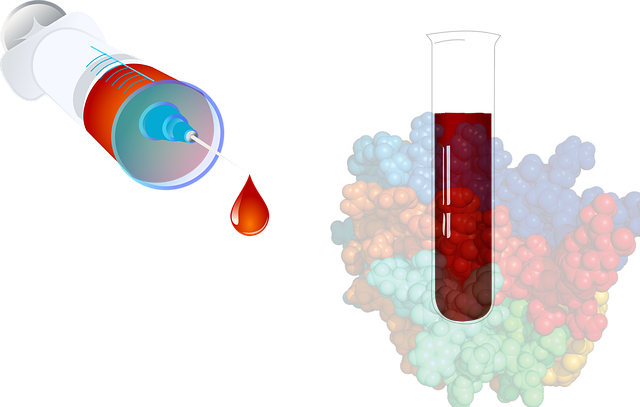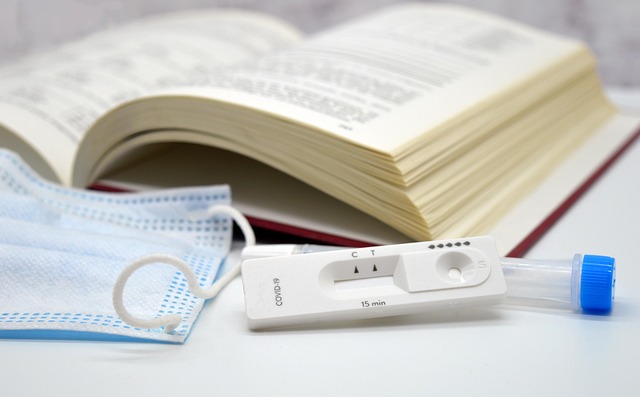Online testosterone blood tests provide a convenient way to assess hormone levels, but results require cautious interpretation due to external influences. Normal ranges vary, emphasizing the need for healthcare provider consultation before considering therapy, especially from online platforms. Testosterone levels between 10-30 nmol/L are typical for men, with significant deviations potentially indicating health issues or requiring HRT. Factors like age, lifestyle, and conditions impact testosterone production. Online tests should complement professional medical advice, with abnormal results prompting consultation for further evaluation and treatment.
Understanding testosterone levels is crucial for overall health, especially when considering an online testosterone blood test. This comprehensive guide will walk you through interpreting your results. We’ll start by explaining what testosterone is and how it works in your body. Then, we’ll dive into key metrics of a testosterone blood test, discuss normal ranges, and explore factors that can impact production. Finally, learn when to seek medical advice based on your test results.
- Understanding Testosterone: The Hormone Explained
- Interpreting Blood Test Results: Key Metrics
- Normal Range vs. High/Low Testosterone Levels
- Factors Affecting Testosterone Production
- When to Seek Medical Advice After Testing
Understanding Testosterone: The Hormone Explained

Testosterone is a hormone that plays a crucial role in male development and overall health. It’s responsible for various physical changes during puberty, including deepening of the voice, muscle growth, and increased body hair. Beyond adolescence, testosterone continues to be essential for maintaining energy levels, libido, and overall well-being in men. However, as we age, natural testosterone production can decrease, leading some individuals to consider testosterone therapy.
When assessing testosterone levels, an online testosterone blood test is a convenient option readily available. While these tests offer accessibility and privacy, it’s essential to approach the results with caution. Factors like stress, exercise, and diet can influence readings. Moreover, individual variations exist in what constitutes “normal” testosterone levels. Therefore, discussing results with a healthcare provider is crucial, especially when considering testosterone therapy options explained online. Addressing any privacy concerns associated with these tests is also vital to ensure a secure experience.
Interpreting Blood Test Results: Key Metrics

When interpreting results from an online testosterone blood test, understanding key metrics is essential. The primary metric to focus on is the total testosterone (T) level, typically measured in nanomoles per litre (nmol/L). A normal range varies slightly between labs but generally falls between 10 and 30 nmol/L for adult men.
Other relevant factors include the reference ranges provided by the testing lab, which can offer insights into what is considered within a healthy spectrum. Additionally, considering the context of your overall health profile—including age, lifestyle, and any existing medical conditions—can provide a more nuanced understanding of your testosterone levels. As you explore options for a testosterone test online, keep in mind that what is considered the best online testosterone test kit may differ based on accuracy, convenience, and cost, while insurance coverage for these tests can vary, so it’s important to check if yours does.
Normal Range vs. High/Low Testosterone Levels

Understanding the normal range for testosterone levels is essential when interpreting your test results. According to most medical sources, a man’s total testosterone (TT) level is considered within a healthy range if it falls between 300 and 1,000 nanograms per deciliter (ng/dL). However, this can vary slightly based on age; younger men may have higher levels, while older men might see a slight decrease within this normal range.
When discussing high or low testosterone levels, it’s important to note that anything outside the established range could indicate potential health issues or conditions like hypogonadism (low testosterone) or, in rare cases, tumors. If your online testosterone blood test results show levels significantly above 1,000 ng/dL, you should consult a healthcare professional who can determine if further investigation is needed. Similarly, levels consistently below 300 ng/dL may prompt the question of whether to consider hormone replacement therapy (HRT), though this decision requires medical guidance and consideration of various factors, including the presence of symptoms related to low testosterone. For any concerns regarding your results from an online testosterone test, such as how soon the tests show up or if you can get a prescription after an online test, it’s best to reach out to a healthcare provider for personalized advice.
Factors Affecting Testosterone Production

Testosterone production is influenced by a variety of factors, which can impact both men and women. One key aspect is age; as individuals get older, testosterone levels naturally decrease, leading to a drop in muscle mass and bone density. Hormonal imbalances caused by conditions like hypogonadism or polycystic ovary syndrome (PCOS) can also affect production. Lifestyle choices play a significant role, with regular exercise and a balanced diet promoting healthy testosterone levels. Certain medications, such as those used for depression or high blood pressure, might lower testosterone, highlighting the importance of discussing any concerns with an online doctor during consultation for an online testosterone blood test. Additionally, stress management is crucial, as chronic stress can interfere with hormone production.
For women, understanding the unique factors affecting their testosterone levels is essential. Conditions like pregnancy and menopause bring about significant changes. An online testosterone test for women can help identify imbalances, especially when combined with an online doctor consultation. The discussion might encompass the potential benefits of testosterone replacement therapy (TRT), which, when explained online, has shown improvements in energy levels, muscle mass, and bone density. However, it’s vital to consider individual health histories during this process.
When to Seek Medical Advice After Testing

If your results indicate abnormal levels of testosterone, it’s crucial to know when to seek medical advice. While online testosterone blood tests offer a convenient and discrete way to check your hormone levels from home, they should not replace professional medical guidance. An online community for testosterone testing experiences can provide some initial insights, but these tests are designed as a screening tool, not a definitive diagnosis.
If results suggest potential issues like low testosterone (hypogonadism) or elevated levels, consulting with a healthcare provider is essential. They can interpret your test results in the context of your medical history and physical examination, recommend further testing if needed, and provide personalized guidance on treatment options, including lifestyle changes, medication, or other interventions. Remember, early intervention is key to managing hormone-related health issues effectively.
Understanding how to interpret testosterone results is key to taking control of your health. By familiarizing yourself with the hormone’s role and utilizing an accurate online testosterone blood test, you can effectively assess your levels. Keep in mind that individual variations exist, so consulting a healthcare professional for personalized advice is always recommended after receiving your results. This step ensures you make informed decisions about maintaining or optimizing your testosterone range.
